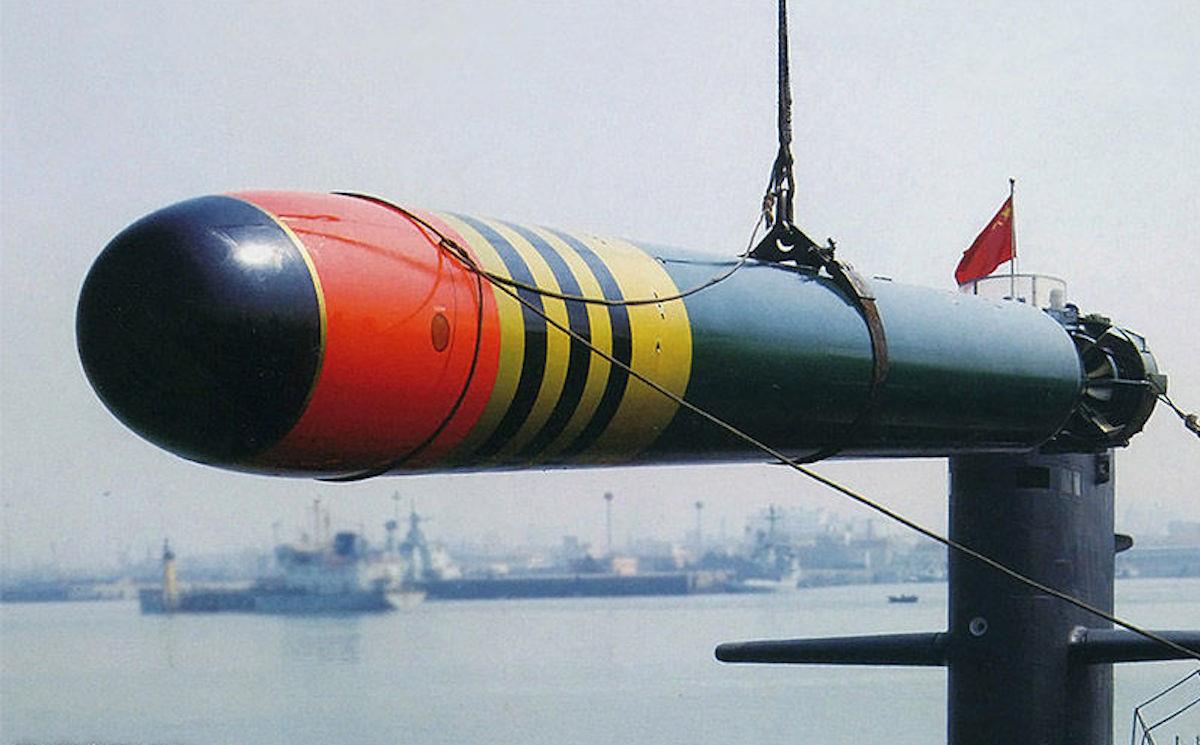
China's Nuke Torpedo Claim More Bluster Than Blast
Beijing-based researchers have completed the conceptual design work for a small, low-cost nuclear reactor for use in swarming torpedoes that could cross the Pacific within a week, the South China Morning Post reported .
China's concept is reportedly similar to Russia's nuclear-armed Poseidon underwater drone, which is designed to bypass US missile defenses and attack coastal targets by generating a radioactive tsunami using a cobalt warhead, according to the US ODIN military training database .
The South China Morning Post notes that the Poseidon is too expensive to mass produce, overpowered and overly large, restricting its use as a strategic-level weapon with Russia's Belgorod special mission submarine.
In contrast, China's new mini-reactor could be used to power multiple torpedoes in a swarm launched in large numbers from existing torpedo tubes mounted on current warships and submarines.
In the peer-reviewed Journal of Unmanned Sea Systems, lead scientist Guo Jian says that China increasingly needs“small, high-speed, long-range unmanned underwater vehicles that can be used in reconnaissance, tracking, attack and strategic strike.”
The article mentions various cost-saving measures to enable mass production of the mini-reactor, including using commercially-available components, using graphite instead of rare earth metals for reactor materials and simplifying the design as much as possible.
As a result, the mini-reactor weighs the same as two average Chinese males and can generate 1.4 megawatts of heat with less than 4 kilograms of low-enriched uranium fuel.
The research team estimates that their nuclear reactor can operate for 400 hours, propelling a torpedo at 60 kilometers-per-hour for over 10,000 kilometers – or the distance between Shanghai and San Francisco.
The reactor would then detach from the torpedo during the final stages of an attack, with a built-in kill mechanism to stop any remaining nuclear reaction as it falls to the seabed.
Guo also claims that the mini-reactor will not leak any radiation, making protective suits unnecessary. Instead, China's submarine and ship crews may handle torpedoes with its new mini-reactor like conventional munitions.
These nuclear-powered torpedoes could be equipped with artificial intelligence (AI) to enhance their combat effectiveness.
Ma Liang, a researcher at China's Navy Submarine Academy, notes that AI and machine learning could allow the torpedoes to attack more effectively. He said that China could use such unmanned weapons to set up ambushes in far-flung waters, hit enemy submarines as they leave port and also track high-value targets.

Russia's nuclear-armed Poseidon underwater drone. Image: Russia Ministry of Defense
China may have stolen a page from Russia's nuclear-powered torpedo concept by developing its disposable nuclear reactor that could be used to power torpedoes to hit targets across the Pacific.
Last year, Ambassador Robert Wood, US envoy to the Conference on Disarmament in Geneva, mentioned that China is looking at exotic nuclear delivery systems, such as Russia's Poseidon drone and Burevestnik nuclear-powered cruise missile, the Associated Press reported last year.
However, there is a possibility that the weapon will never leave the conceptual or prototype stage. China is known for following the lead of other technology leaders such as the US and Russia, developing its technology then leaving it on the shelf, notes Hans Kristensen, director of the Nuclear Information Project at the Federation of American Scientists, said in the Associated Press report.
Moreover, China may have good reason to keep such technology on the shelf, as it may ultimately have limited military value.
A 2021 study by the Nautilus Institute mentions that despite the remarkable features of Russia's Poseidon drone, such as near-unlimited range and extreme destructive power, it may have only marginal military value.
Even if Poseidon has a speed of 129 kilometers per hour, it still requires a day or two of travel time to strike targets, in contrast to an intercontinental ballistic missile (ICBM) with a flight time of less than an hour and no modern missile defense system proven to stop reliably such an attack.
The study also mentions that since nuclear-powered torpedoes are faster than conventionally-powered ones, they may create much more noise and be easily detectable by sonar.
The low speed of China's nuclear torpedoes relative to ICBMs and Poseidon, combined with their potentially substantial acoustic signature, means that potential targets may have time to implement defensive measures and position countermeasures long before they reach them.

A Chinese YU-6 torpedo. Image: Facebook
The study notes that using a nuclear-powered torpedo to destroy coastal areas with a radioactive tsunami may not achieve any strategic objectives that are unachievable without nuclear weapons. Such an attack is also of questionable morality, considering the potential for massive civilian casualties.
Perhaps the most significant strategic challenge China's nuclear-powered torpedo can bring is the further destabilization of strategic nuclear security.
Prototype weapons such as nuclear-powered torpedoes add to the ambiguity surrounding China's opaque nuclear program and ongoing expansion of its nuclear arsenal to develop a viable triad of sea, air and land-based delivery systems.

Legal Disclaimer:
MENAFN provides the information “as is” without warranty of any kind. We do not accept any responsibility or liability for the accuracy, content, images, videos, licenses, completeness, legality, or reliability of the information contained in this article. If you have any complaints or copyright issues related to this article, kindly contact the provider above.






















Comments
No comment